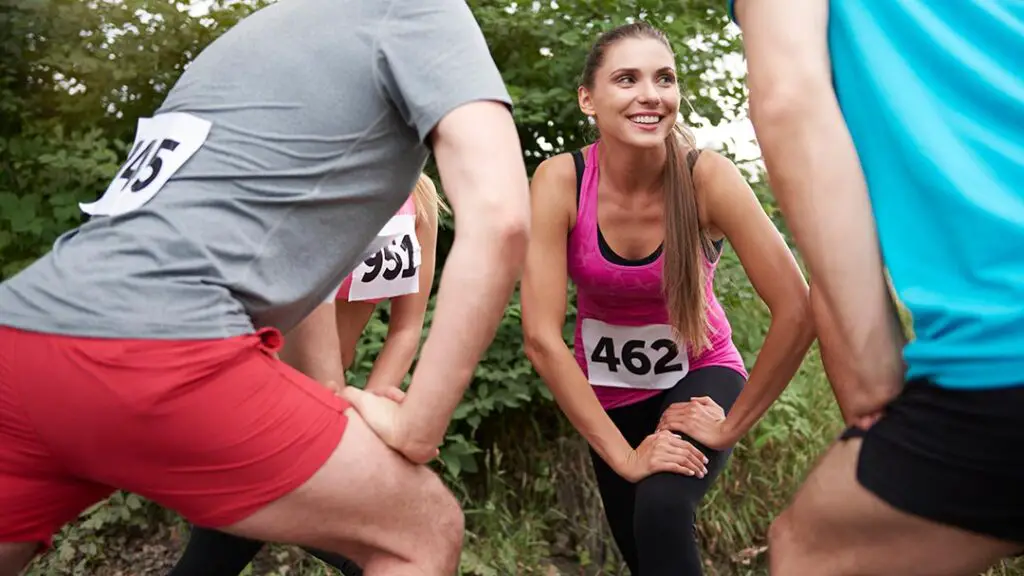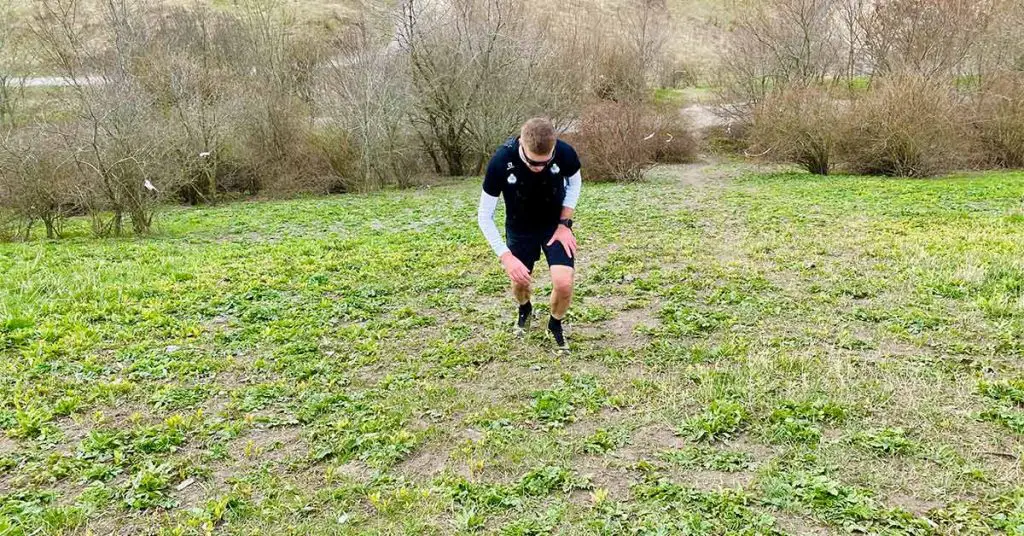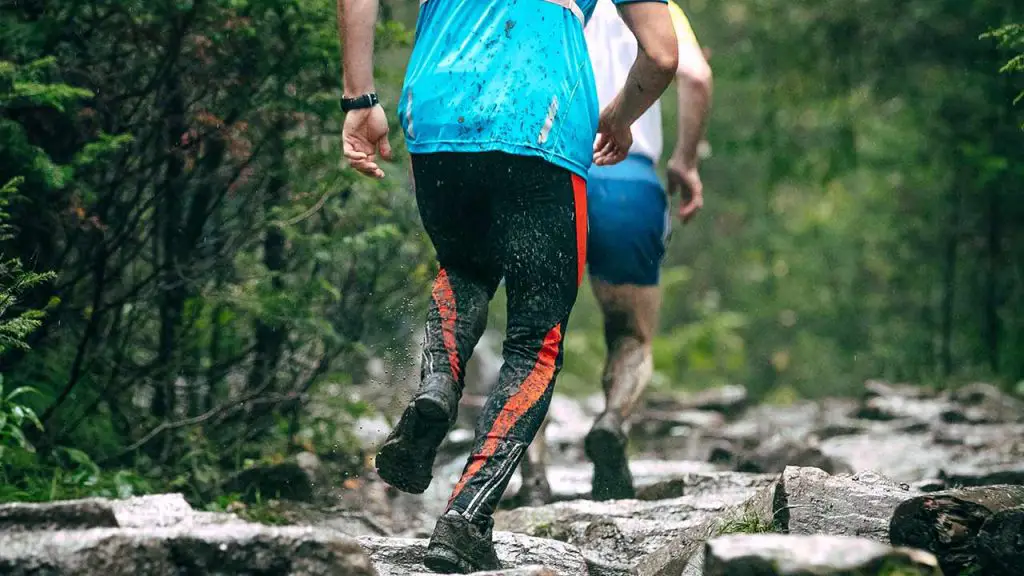Estimated read time: 5 minutes.
Before you hit the pavement, knowing how your running routine will impact your body is important. Does running make your thighs bigger? Are there certain distances and frequencies that yield different results?
Understanding the science behind how a simple jog can significantly affect the shape of our ideal leg composition is crucial. It all comes down to intensity and duration – this blog post will dive into exactly what it takes for serious runners – such as yourself – to get those enviable muscular legs!
Definition of Running and Its Benefits for Muscle Building
Running is a fantastic cardiovascular exercise that can benefit those who want to enhance their muscle-building efforts. At its core, running involves the coordinated movement of muscles all over the entire body, making it an excellent way to stimulate muscle growth and improve overall muscle tone and definition.
Additionally, running helps to strengthen the core and leg muscles, which are particularly important for building overall muscle mass. By incorporating running into a regular workout routine, individuals can reap the benefits of increased endurance, improved cardiovascular health, and improved strength and muscular definition.
Whether you’re a seasoned athlete or just starting out on your fitness journey, running is a versatile and effective way to build muscle and achieve your fitness goals.
Types of Running – Long-Distance, Sprints, Hill, Etc
Running is a versatile sport that offers a range of options for different preferences and fitness levels.
Long-distance running, for example, requires high endurance levels and the ability to pace oneself over a prolonged period.
Sprinting, on the other hand, is all about explosive energy and short, intense bursts of speed.
Hills provide an added challenge by incorporating uphill runs that work for various muscle groups, while trail running tests one’s balance and coordination on uneven terrain.
Whatever the type, running offers numerous health benefits, from improved cardiovascular health to a boosted mood, lower body muscles, and better overall fitness. It’s no wonder running has become a staple in many people’s fitness routines.
Muscle Groups That Are Activated During Running
Whether you’re a seasoned marathon runner or just starting, understanding the muscle groups activated during running is key to maximizing your performance and preventing injury.
During a typical run, your quadriceps, hamstrings, calves, glutes, and core muscles are all hard at work. Your quads are responsible for extending your knee, your hamstrings assist with leg flexion, your calves help with push-off, your glutes aid in overall stability and power, and your core muscles help maintain proper form and balance.
You can improve your speed and endurance by actively engaging and strengthening these muscle groups while reducing the risk of common running injuries.
Effects of Running on Leg Muscles
Running is a fantastic way to improve cardiovascular health, burn more calories, and feel good about yourself. However, what are the effects of running on leg muscles? First and foremost, running targets the muscles of the lower body, making your legs bigger, particularly the quadriceps, hamstrings, calves, and glutes.
You can build strength, increase endurance, and develop more powerful strides by constantly engaging these muscles. At the same time, running also puts a lot of strain on these muscles, leading to tightness, soreness, and even injury if not properly managed.
That being said, as long as you listen to your body, stretch regularly, and incorporate proper recovery practices, the effects of running on your leg muscles can be overwhelmingly positive.
Nutrition and Hydration Tips When Running to Help Build Muscles
Nutrition plays a critical role in building strong muscles when running. Athletes must consume a well-balanced diet that includes carbohydrates, proteins, and healthy fats.
Carbohydrates are essential in providing the energy required to maintain a consistent pace, while proteins help with muscle recovery and regeneration. Foods like lean meats, fish, nuts, and eggs are great options for protein.
Hydration is also a crucial element in muscle building during running. Losing even 2% of body weight through sweat can result in a significant decrease in performance. Drinking plenty of water before, during, and after the run is advisable to prevent this.
Additionally, electrolyte drinks can help replace the minerals lost through sweating. Remember, proper nutrition and hydration are key to building strong, healthy muscle when running.
Proper Stretching Technique to Prevent Injury and Maximize Results
Stretching is an essential component of any fitness routine. Not only does it help prevent injury, but it also maximizes the results of your workout. However, proper stretching technique is critical to gain these benefits. It’s essential to hold each stretch for at least 30 seconds and avoid bouncing, which can lead to injury. Instead, ease into the stretch and keep it until you feel mild tension.
Additionally, it’s crucial to stretch all major muscle groups, including the back, chest, legs, and arms. Remember that stretching should never be painful and should always be done gradually. By following these tips, you can ensure that you are stretching your muscle tissue correctly and safely.
Conclusion
In conclusion, running can help you lose fat, build muscle and increase the size of your legs. It is essential to understand that not all running exercises are created equal. For example, sprints and hill runs create more tension on the muscles than a steady jog, which can increase muscle growth.
Additionally, ensuring you stay properly hydrated and have a balanced diet when running can also aid in optimum results. The benefits of running are countless; from weight and fat loss to strengthening your leg muscles to improving cardiovascular health to strengthening your core stability – it is no surprise that running is one of the most popular physical activities!
FAQ
Is running the best way to build leg muscle?
While running can be beneficial for building leg muscles, it is not necessarily the only way. Strength training exercises such as squats and lunges are also effective at targeting and developing lower body strength. Additionally, incorporating your leg exercises with other forms of cardio, such as aerobic exercises such as biking or swimming, can contribute to larger and stronger leg muscles over time. Ultimately, finding an exercise routine that works best for you is important.
How often should I run to lose weight and build muscular legs?
It is generally recommended to run three days a week to see improvements in your leg muscles. However, this may vary depending on fitness level and goals. Beginners should start with a slower, long run and gradually increase intensity and duration over time. Additionally, it is essential to remember to incorporate rest days into your routine for the muscles to recover and build properly between running sessions.
Does running on an incline help build leg muscle?
Running on an incline can be beneficial as it causes more tension in the muscle fibers of the muscles than running on a flat surface. This can lead to increased strength development. However, it is important to only increase the incline slowly – if you go too fast, you risk injury and strain on your leg muscles. Additionally, make sure to include proper stretching before any running to prevent injuries.
Can stretching prevent injury when running?
Stretching can be an essential part of any running routine. Proper stretching helps to improve flexibility and prevents muscle soreness. Additionally, it can help reduce the risk of injury due to improper form or overloading muscles with too much intensity. Stretching should be done before and after each run to maximize results and minimize potential injuries.
What other tips can I follow for building leg and calf muscles while running?
Besides proper stretching, one tip you can follow to gain muscle is incorporating adequate nutrition and hydration into your routine. Eating a balanced diet rich in lean proteins, healthy fats, fruits, and vegetables is essential for gaining strong muscles. Additionally, staying hydrated is necessary for providing the body with the fluids it needs to properly fuel workouts and recover afterward. Finally, incorporating strength training exercises such as squats and lunges into your routine can also help target specific muscle groups in the legs.
- How Many Laps Around a Track is a 5K: Your Guide - October 22, 2023
- When is Track and Field Season? - October 22, 2023
- Understanding the Length: How Long Is a Running Track? - October 22, 2023



